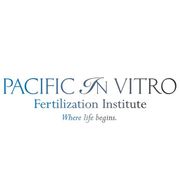
Yearly, thousands of same-sex couples undergo fertility treatment to build their families. This process can involve complex assisted reproductive technologies (ART). These procedures commonly involve third-party agents, such as surrogacy, donor egg agencies and sperm banks. The role of the reproductive health care workers is to bring all the pieces together, so the journey toward building a family can be smoother and all the alternatives are reviewed to best help a couple achieve success.
An available option for a female couple is reciprocal in-vitro fertilization (IVF). In simple terms, reciprocal IVF represents the “sharing” of two females in the reproductive process. Simply put, one of the women provides the eggs while her partner carries the pregnancy. This “couple” approach to building a family is a unique opportunity where both female partners are involved.
One partner undergoes what is known in the field of ART as “ovarian stimulation” and surgical removal of her eggs (IVF), while the other partner’s uterus is prepared to carry the newly formed embryo (partner’s egg with donor sperm). It is important that prior to the start of the process, they select an appropriate sperm donor. It is usually recommended to acquire donor sperm from a reputable sperm bank approved by the American Association of Tissue Bank (AATB). This ascertains that the sperm donor is medically and psychologically cleared, and the risk of the sperm carrying an infection—which then could pass to the baby or carrying partner—is minimal.
In order for a successful procedure, one partner must have enough eggs, and the other partner's uterus must provide a good environment for the newly transferred embryo. In the natural monthly cycle of a female, only one egg usually develops and releases. However, the development of only one egg does not lead to the best odds of embryo development. The development of more than one egg is desired to increase the odds of at least one good embryo.
To end up with more than one egg, one of the partners in this reciprocal exchange needs to undergo stimulation of multiple egg growth in her ovaries. During egg stimulation,medications are given daily for approximately 10 to 12 days. This is to override the one egg response of the ovary and encourage and help induce the growth of multiple egg sacs (follicles). Over this two-week period of time, the egg growth is measured by a transvaginal ultrasound.
Once there are an adequate number of large follicles that have grown in the ovaries, another hormone—most commonly Human Chorionic Gonadotropin (HCG)—is administered to mature the eggs. The eggs then need to be retrieved. This procedure requires going to an operating suite approximately 36 hours after this medication(s) is administered.
During the procedure, a thin needle is placed transvaginally under ultrasound guidance into the ovarian follicles, and fluid, which is seen in the follicles, are suctioned out. All the fluid is sent to a specialized reproductive laboratory where the embryology team (specialist in the in-vitro fertilization/outside of the body) looks at the fluid to try to find eggs. The retrieval procedure usually takes 15 minutes and is done under intravenous anesthesia. Because placing a needle into an ovary may be uncomfortable, anesthesia is required.
The number of eggs retrieved depends on how the female responds to the stimulation medications and can range from one to more than 20 eggs. The higher numbers are achieved in younger women, while older women develop fewer follicles, and, therefore, fewer eggs are obtained.
The eggs and the donor sperm are then placed together (IVF) to allow fertilization to take place. If there are only a few eggs, or for some reason the sperm is good quality (which is rare when sperm comes from a reputable sperm bank), a single sperm can be injected into an individual egg (intracytoplasmic sperm injection or ICSI). About 65% of eggs will fertilize normally, although this does depend on the quality, maturity and number of eggs retrieved. The majority of fertilized eggs will then start to divide and become an early embryo.
In coordination with the partner undergoing the ovarian stimulation and retrieval of her eggs, the reciprocal partner will be undergoing a uterine stimulation to receive the embryo(s) into her womb. The uterine stimulation medications are oral, vaginal or injectable and are used to thicken up and prepare the lining of the uterus (endometrial lining) for the embryo(s).
The embryo(s), depending on how they develop, are then placed through a small catheter into the recipient’s uterus on the third or fifth day after the egg retrieval of the reciprocal partner. Depending on the quality of the embryos and the chronological age of the partner who underwent the ovarian stimulation, recommendations are made for the number of embryos to place into the uterus and the day to transfer. This is usually a 10-minute, pain-free procedure.
Approximately 10-14 days after the embryo transfer is performed, and a blood pregnancy test is done. The reciprocal cycle usually takes six to eight weeks to coordinate and synchronize, but it is a unique opportunity for same-sex female couples to build their family.
About the Business
(3 reviews)
Have a question? Ask the experts!
Send your question

